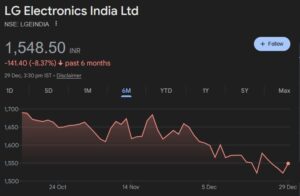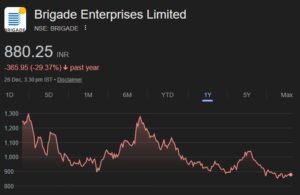
Trading Options is inevitable. Everyone is doing it
According to Chandan Taparia of Motilal Oswal, nearly 80% of the total turnover in the Indian derivatives market is contributed by the Nifty and Bank Nifty options.
“Indian Derivatives market is growing rapidly from last couple of years because of its multi fold advantages like higher liquidity, less transaction cost, flexibility, hedging, arbitrage, user friendly, customized strategies, limited or calculated risk and rising knowledge with better understanding among the market participants“, he has said.
“Nowadays, weekly expiry of Bank Nifty and monthly expiry of Nifty attracts huge participants because of its inbuilt features,” he has added.
“Beauty of Option strategy is that it can be applied for any kind of expected market move and most suitable for all profile of clients,” he has elaborated.
This happy state of affairs is confirmed by Nithin Kamath, the founder of Zerodha, India’s largest and most popular brokerage.
“Over the last year, we have seen a trend of retail traders shifting from trading stocks and futures to buying options. This may be fuelled by the restrictions on intraday leverages on stocks and futures under the new peak margin rules. This trend is also strengthened by an influx of younger, more aggressive traders,” he has stated.
The reason for the popularity of options amongst investors and traders is because of the benefits of leverage.
“What attracts people to options is leverage – the ability to get exposure to large trading positions with small amounts of money,” Kamath has pointed out.
He has explained that if (at the present Index level of 16000) we desire to buy one lot of the Nifty (such as through an Index Fund or an ETF) we would need an outlay of Rs. 12 Lakh (i.e. 16000 x 75).
However, we can achieve the same reward profile if we buy one lot of the 16000CE at the paltry price of Rs. 7500 (i.e. Rs. 100 x 75).
That is a mind-boggling leverage of 160x of the capital!
The best part is that while our gains are unlimited, our loss is limited to the amount paid to buy the option, namely Rs. 7500.
In contrast, if we buy the Index Fund or an ETF, we face the specter (albeit unlikely) of our entire capital of Rs. 12 Lakh going down the drain.
Nithin Kamath has rightly cautioned that leverage can be a “weapon of mass destruction” unless used carefully.
“The most fundamental risk management rule when actively trading with leverage is to ensure you don’t take a position so large that it can cause a loss of more than 5% of your trading capital. When buying options, the entire value of the option can go to zero quickly. This means you shouldn’t be buying options for more than a small percentage (<5%) of your capital at any given time,” he has advised.
“This rule gets broken often by amateur traders in an attempt to get rich quickly. This is tempting fate. If you somehow did get lucky by being aggressive with leverage, you are most likely to lose it in the long run if you follow the same strategy. Most traders don’t change their trading habits after a large winning trade. Making money will only reinforce the idea that what you are doing is probably the right way to trade,” he has added.
Kamath has cited the chilling example of a trader who initially converted a paltry sum of Rs. 2 lakh into a fortune of Rs. 2 crore by buying deep OTM Calls during the 2009 elections. However, the habit cost him dearly because over the next six months, he blew up his account and lost everything.
Options strategies are the best way to trade
According to experts, the best way to take advantage of the benefit of options is through ‘risk-defined‘ strategies where we know before-hand what our maximum profit and loss is going to be.
“Trading options strategies (combination of calls and puts, buying and shorting) as compared to just buying naked calls or puts can significantly lower the risk and hence increase the odds of winning,” Kamath has confirmed.
SEBI has also, in a proactive measure, facilitated such strategies by slashing the margin requirements.
Here are some sample calculations for F&O positions in the new margin framework. Iron condors require 70% lesser margins. Now, trying to figure out how to nudge customers away from high risk naked trades to low-risk spreads. https://t.co/FxrUb3d1H3 https://t.co/NWeZD5ErRe pic.twitter.com/AewTaDyi6P
— Nithin Kamath (@Nithin0dha) May 19, 2020
There are multiple strategies, some can give 8x return on capital
The amazing aspect of some options strategies is that if one is lucky, the return can be multi-fold while the losses are limited.
“There are also many weIl-known dual directional strategies, because they can make profits from price movements in either direction. The basic principle of using them is that you combine multiple positions that have unlimited potential profits but limited losses so that one will make a profit providing the underlying security moves far enough in one direction or the other,” Chandan Taparia has stated.
Some high probable option strategies include ‘Call Ladder Spread’, ‘Put Ladder Spread’, ‘Bull Spread’, ‘Bear Spread’, ‘Butterfly’ or ‘Iron Condor’.
“Many times a 10 points risk or option strategy have made 7 to 8 times return in Bank Nifty weekly expiry“, he has added.
According to Seth Freudberg of SMB Capital, the “Broken Wing Butterfly” is one such strategy which has a “built-in lottery ticket” and can yield manifold gains, if one is lucky, while keeping the loss under check.
Old-school investors can try ‘Covered Calls’ and ‘Cash Secured Puts’
Many old-school investors are understandably loath to dabble with options given their notorious reputation in the past.
However, the ‘Covered Call‘ strategy is an ideal mechanism for conservative investors to leverage their existing investments to squeeze out extra returns.
“A Covered call is a very effective and yet simple strategy that works very well. In fact, it is designed to make the maximum amount of money in moderately bullish to volatile markets where the price of the underlying is within a tight range and the options premiums are high. Covered Call is the only main strategy which can reduce the cost of holding position or allow a person to get the lower break even point however sometimes reward could be capped,” Taparia has explained.
Similarly, the ‘Cash Secured Put‘ strategy enables us to buy stocks are lower prices and/ or to receive a premium whilst waiting for the stock to reach our desired price levels.
Even Warren Buffett uses options for extra gains
The ultimate endorsement that options can be used by old-school and conservative investors comes from Warren Buffett.
He has disclosed in his 2008 letter that Berkshire Hathway has “put contracts” totalling $37.1 billion which are spread among four major indices such as the S&P 500.
The said contracts have earned premiums of $4.9 billion (which has been invested).
He has explained in the letter that the said options are at risk only if all the global indices go to zero, which is obviously highly improbable.
“One point about our contracts that is sometimes not understood: For us to lose the full $37.1 billion we have at risk, all stocks in all four indices would have to go to zero on their various termination dates“.
He has further elaborated on the status of these contracts in the 2020 conference (when the markets had plunged and breached the lower circuits).
Conclusion
Given the growing popularity of Options, even amongst investors, it is better if we also familiarize ourselves with its basics. We can start with simple strategies such as the ‘Covered Call’ and the ‘Cash Secured Put’ before venturing into complex strategies such as the ‘Broken Wing Butterfly’!






